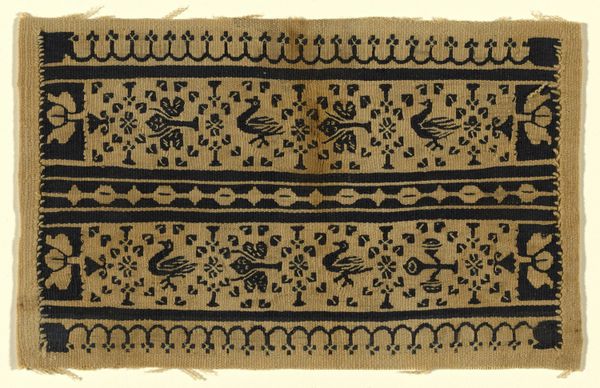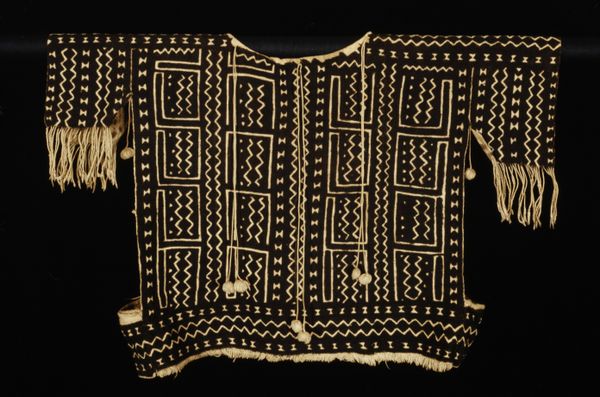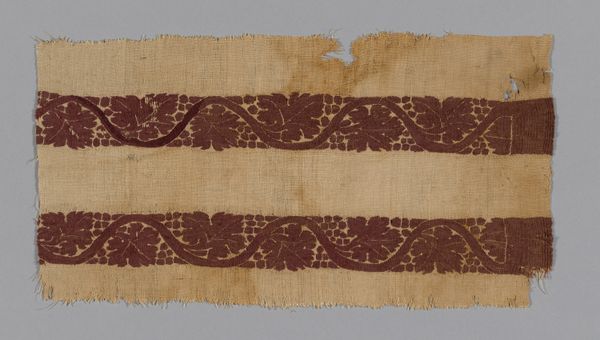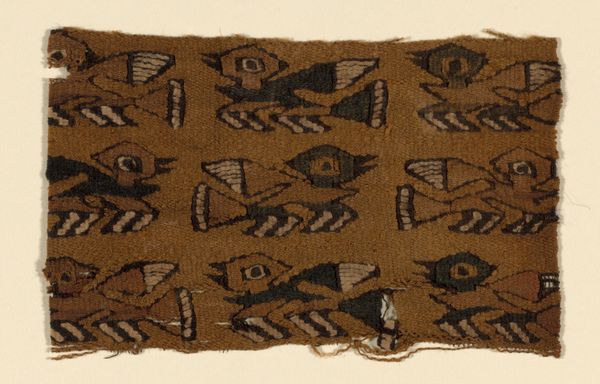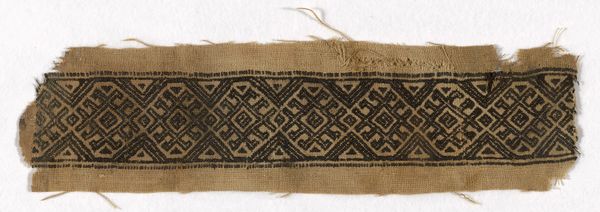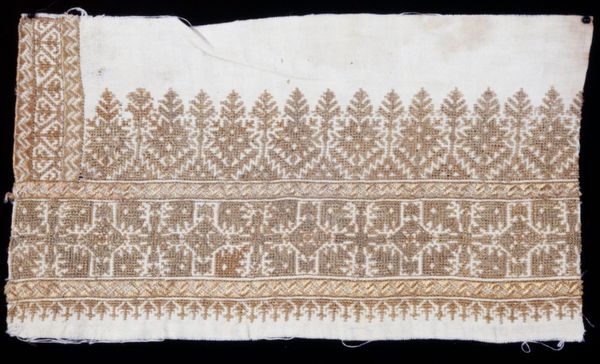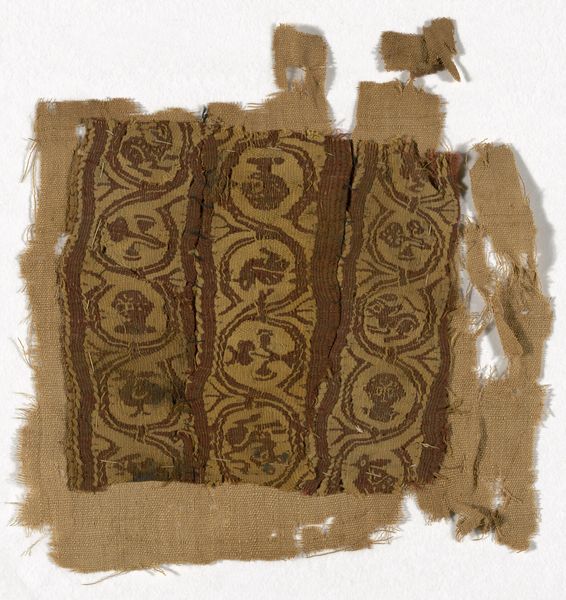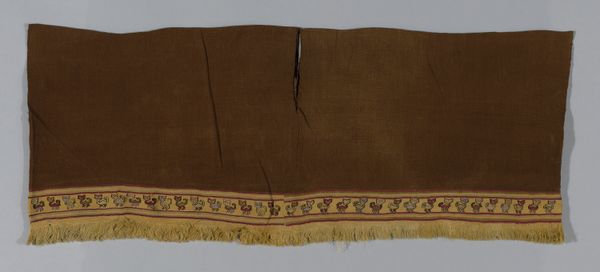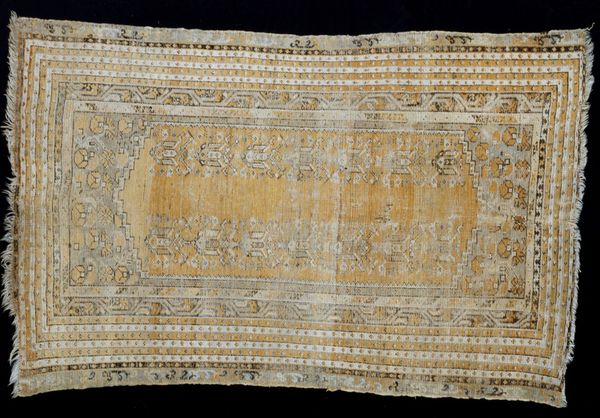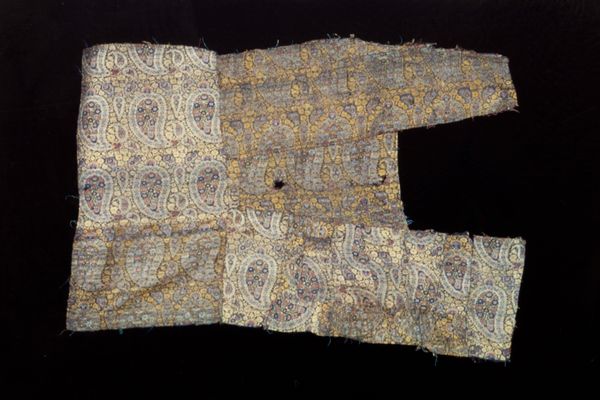
fibre-art, weaving, textile
#
fibre-art
#
weaving
#
textile
#
geometric
#
indigenous-americas
Dimensions: 35.8 × 20.8 cm (14 × 8 1/8 in.) weft repeat: 5.8 cm 2 1/4 in.
Copyright: Public Domain
Curator: Standing before us is a textile fragment of woven fiber, attributed to the Chancay people, crafted sometime between 900 and 1470. It's currently part of the Art Institute of Chicago's collection. Editor: Well, my initial impression is somber; the piece’s darkness and tattered state evoke a real sense of fragility and loss. What are we seeing, formally? Curator: Visually, the fragment is divided into distinct panels. One area displays a gridded design interspersed with diamond-shaped figures, while another features stylized avian or zoomorphic motifs repeated across the surface. Look closely at the texture; even in its fragmented condition, the weaving technique seems incredibly sophisticated. Editor: Agreed. Given its creation predates the Inca empire, what role did textiles like these play in Chancay society? Was this strictly decorative or something more symbolic? Curator: Textiles in the pre-Columbian Andes were never simply decorative. They were deeply intertwined with status, religious beliefs, and social identity. High-quality weaving like this example may have been used for ceremonial garments or as burial offerings. It is theorized these held significant cultural power. The motifs woven into textiles could represent deities, ancestors, or cosmological concepts. Editor: So, the symbolism layered onto the fabric becomes a potent visual language? Curator: Precisely. Furthermore, the act of weaving itself carried cultural weight, often performed by women and reflecting a structured social order. Editor: Knowing all that truly transforms how I see this. The “fragment” becomes less an incomplete object and more a potent reminder of lost societal structures. Thank you for providing such insightful context. Curator: And your close observations encourage us to consider how patterns and structure are capable of transcending cultures, inviting multiple interpretations of shared humanity through aesthetics and purpose.
Comments
No comments
Be the first to comment and join the conversation on the ultimate creative platform.

